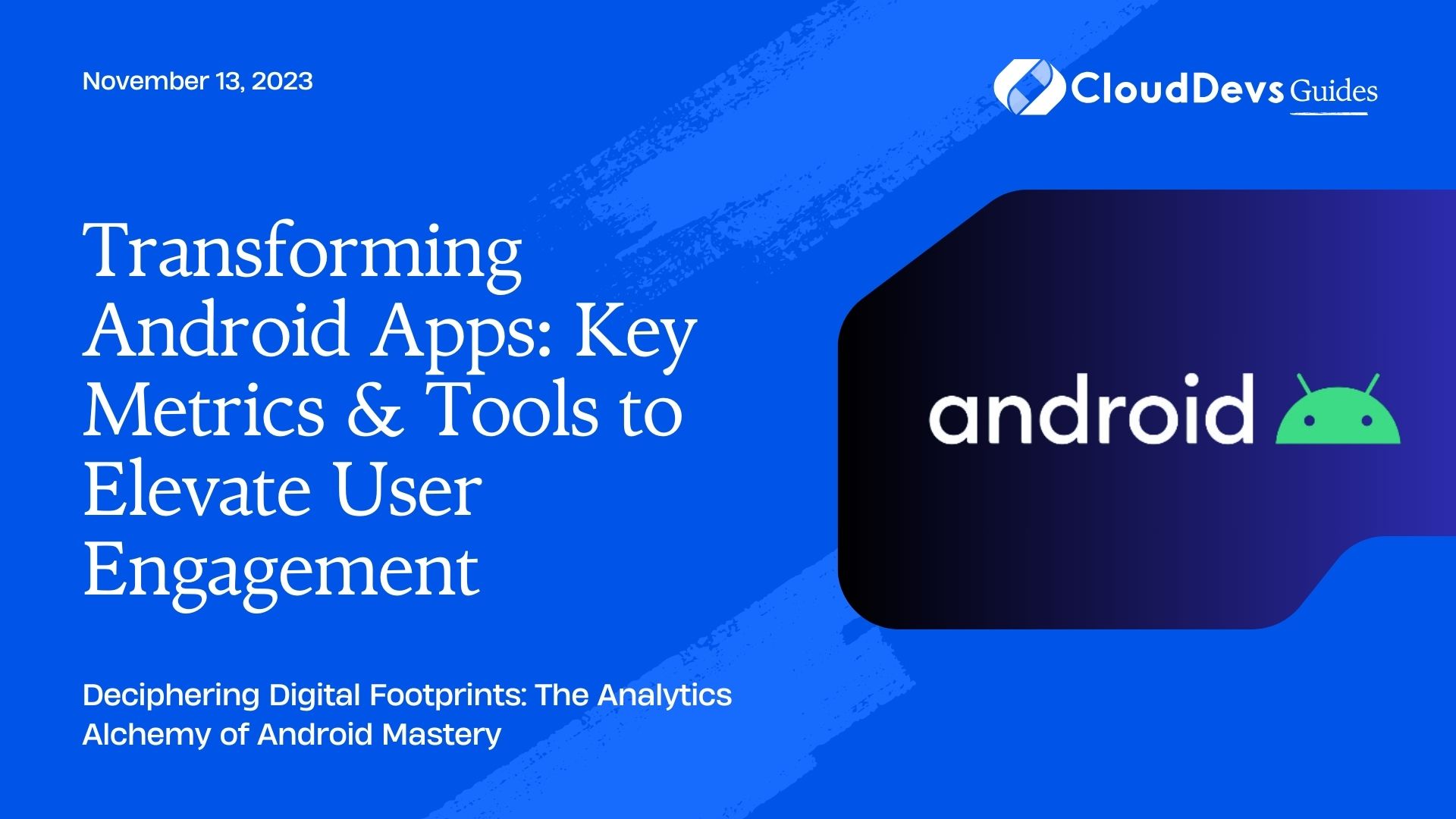Transforming Android Apps: Key Metrics & Tools to Elevate User Engagement
The mobile app ecosystem has been growing exponentially over the last decade. As a result, many businesses are looking to hire Android developers to keep up with the demand. Understanding user behavior has become crucial not just for these developers, but also for marketers and businesses. To achieve this understanding, we turn to app analytics. Specifically, for Android, the world’s most popular mobile operating system, app analytics provide a goldmine of data. With the right insights, businesses can improve user experience, optimize performance, and maximize profits.
Table of Contents
Let’s dive into the importance of tracking and analyzing user behavior in Android apps and how you can leverage this data.
1. Why is Tracking User Behavior Important?
- Personalization: By understanding user behavior, developers and businesses can personalize app experiences. For instance, if a user frequently listens to jazz in a music app, the app can provide more jazz recommendations.
- Optimization: Analytics helps identify features that are frequently used and those that aren’t. Developers can then prioritize improving popular features or revamp lesser-used ones.
- Monetization: For apps that rely on in-app purchases or advertising, understanding user behavior is key to maximizing revenue. Knowing when and where to place ads, or which in-app purchase is more popular, can significantly increase profits.
2. Popular Android App Analytics Tools
Before we proceed, it’s crucial to familiarize ourselves with the tools available:
- Google Analytics for Mobile: A free tool from Google that provides detailed statistics and analytics of Android app usage.
- Firebase Analytics: A comprehensive mobile and web app analytics tool, Firebase can track user behavior, ad performance, and much more.
- Mixpanel: A powerful user tracking tool, Mixpanel allows for event tracking, funnel analysis, and user segmentation.
3. Key Metrics to Track
- Active Users: Measure daily, weekly, and monthly active users. This helps gauge the overall health of your app.
- Retention Rate: Determines the percentage of users who return to your app after their first visit. A high retention rate indicates that your app is meeting user needs.
- Session Duration: Average length of time a user spends in your app during a single session. This can indicate the app’s engagement level.
- Events: Specific actions users take within the app. For instance, in an e-commerce app, adding an item to the cart can be an event.
- Screen Views: Helps identify the most and least popular screens within your app.
Examples of Tracking and Analyzing User Behavior
3.1. E-commerce App
– Track: Which products are viewed the most? What’s the average time spent on product pages?
– Analyze: If a product has high views but low purchases, there might be issues with pricing, product description, or the checkout process.
3.2. Music Streaming App
– Track: Which genres or artists are most frequently played? How many songs are skipped?
– Analyze: If a particular genre is popular, consider curating more playlists around it. If songs are frequently skipped, perhaps they don’t fit the playlist’s theme.
3.3. Fitness App
– Track: How often are workout routines accessed? What’s the completion rate of a 30-day challenge?
– Analyze: If a specific workout routine is popular, consider adding variations of it. If users drop off a challenge, it might be too difficult or not engaging enough.
4. Best Practices for Analyzing Data
- User Segmentation: Group users based on characteristics like demographics, behavior, or location. For example, segmenting by country can reveal regional preferences.
- A/B Testing: If unsure about a new feature or change, test it on a small group of users first. Analyze their behavior and compare it to a control group.
- Feedback Integration: While quantitative data from analytics is powerful, don’t ignore qualitative feedback. User reviews and feedback can provide context to the data.
5. Privacy and Ethics in App Analytics
Remember to always prioritize user privacy. Only collect data that’s necessary, and be transparent about it. Ensure you’re compliant with laws like GDPR and make it easy for users to opt-out of tracking.
Conclusion
Understanding user behavior through analytics is a powerful tool for any business or developer in the Android app space. For those looking to hire Android developers, it becomes even more vital to grasp these insights. They provide actionable strategies that can drastically improve app usability, user satisfaction, and monetization tactics.
Investing time and resources into a robust analytics strategy ensures that the app evolves with its users, catering to their needs and preferences while also achieving business objectives. So, whether you’re just starting out, aiming to hire Android developers, or looking to refine your existing strategy, dive deep into analytics and let data-driven decisions pave your path to success.
Table of Contents






